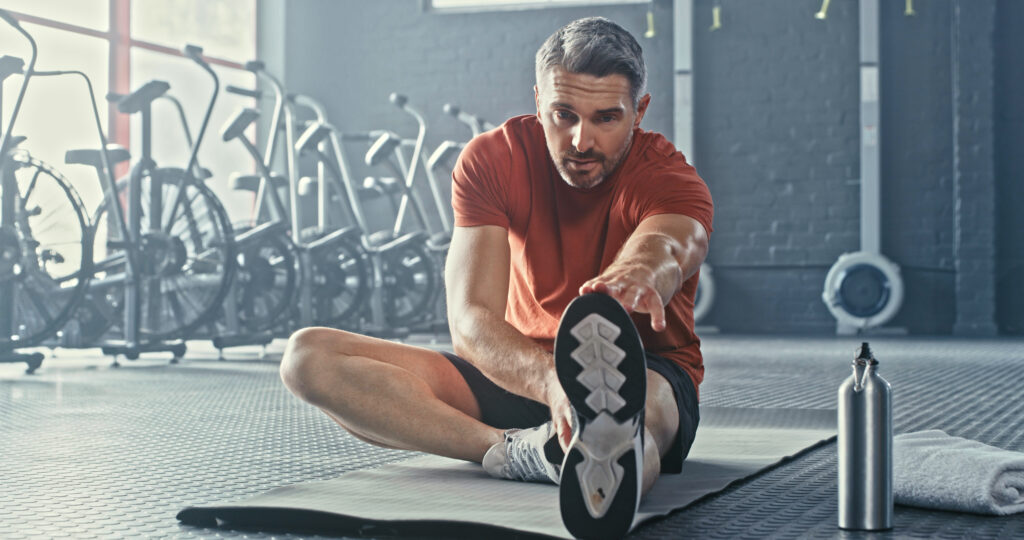Muscle soreness after a workout is one of those love-hate feelings every fitness enthusiast is familiar with. On the one hand, it feels like proof that you pushed your body to grow stronger. On the other, it can leave you wincing with every step or stretch. Whether you’re lifting weights, running, or doing a HIIT session, post-workout soreness is your body’s natural response to the stress you’ve placed on your muscles. But how can you relieve it—and recover faster?
Let’s explore the most effective and science-backed ways to ease sore muscles, support recovery, and prepare your body for your next workout.
Understanding Why Muscles Get Sore
Before diving into remedies, it’s important to understand why soreness happens in the first place. Muscle soreness, especially the kind that shows up 12–48 hours after exercise, is known as Delayed Onset Muscle Soreness (DOMS). It usually occurs when you try a new workout, increase your intensity, or engage in eccentric movements (where muscles lengthen under tension, like lowering weights or running downhill).
Microscopic tears in muscle fibers trigger inflammation, which causes discomfort, tightness, and swelling. Fortunately, this isn’t a bad sign—it’s part of the process that helps muscles grow back stronger.
What Actually Helps Sore Muscles?
1. Compression Therapy
One of the most effective passive recovery methods is compression therapy, which uses controlled pressure to enhance circulation and reduce swelling. Athletes and recovery specialists increasingly rely on compression boots for this reason.
These boots gently squeeze the legs, helping to move lymphatic fluid and blood more efficiently. As a result, they reduce muscle stiffness, improve mobility, and decrease downtime between training sessions. It’s a relaxing yet powerful way to give your body a chance to heal.
2. Active Recovery
As counterintuitive as it may sound, light movement can help reduce soreness better than complete rest. Activities like walking, cycling at low intensity, swimming, or even doing yoga improve blood flow, which helps flush out metabolic waste and delivers nutrients to repair tissues.
Tip: Aim for 20–30 minutes of active recovery on rest days to speed up healing.
3. Stretching and Mobility Work
Gentle stretching can ease tight muscles and improve your range of motion. Dynamic stretches before a workout and static stretches after can both support long-term flexibility and reduce the risk of future soreness.
Include movements like leg swings, arm circles, or foam rolling before exercise, and hold stretches for 20–30 seconds after a workout.
4. Massage Therapy
There’s a reason professional athletes swear by massages—it works. Massages help break down knots, improve blood flow, and reduce inflammation. While a full-body massage might not always be accessible, there are now effective at-home tools that can mimic the benefits.
A leg massager, for instance, targets sore quads, hamstrings, and calves. It’s especially useful after leg-heavy workouts like running, squats, or cycling. The gentle pressure not only eases discomfort but also prepares the muscles for the next training session.
5. Hydration and Nutrition
Muscles are made up of 75% water, so staying hydrated is key to preventing and recovering from soreness. Dehydration can worsen cramps and inflammation. Drinking enough water throughout the day and especially after working out helps flush out toxins and supports muscle repair.
Nutrition-wise, your body needs a mix of protein (for muscle repair), carbs (to replenish glycogen stores), and healthy fats (for inflammation control). Foods rich in antioxidants—like berries, leafy greens, turmeric, and ginger—can also reduce soreness.
6. Sleep and Rest
No recovery technique can replace the importance of quality sleep. It’s during deep sleep that your body releases growth hormone, which is essential for tissue repair. Aim for at least 7–9 hours of uninterrupted sleep to allow your muscles time to rebuild.
If your schedule is tight, even short power naps can support recovery. Just make sure your sleeping environment is cool, quiet, and screen-free for at least 30 minutes before bedtime.
7. Heat and Cold Therapy
Both heat and cold have their place in muscle recovery:
- Cold therapy (like ice packs or cold baths) can reduce inflammation and numb pain, especially if applied within 24 hours of intense exercise.
- Heat therapy (such as heating pads or warm baths) promotes blood flow and relaxation, making it useful for lingering soreness or tight muscles.
Some athletes alternate between hot and cold (contrast baths) to maximize circulation and recovery.
8. Epsom Salt Baths
Soaking in an Epsom salt bath is a time-tested remedy for sore muscles. The magnesium in the salts can be absorbed through the skin and may help with muscle relaxation, reduced inflammation, and stress relief. Add two cups of Epsom salt to warm bathwater and soak for 15–20 minutes.
9. Foam Rolling and Myofascial Release
Foam rolling applies pressure to trigger points or “knots” in the muscles. It’s a form of self-massage that can break up adhesions in the fascia (connective tissue around the muscles), improve mobility, and reduce soreness. Spend about 1–2 minutes on each major muscle group after your workout.
If you want a deeper release, massage balls or tools like a Theragun can target smaller areas more precisely.
10. Supplements (Optional and Individual)
While food should always come first, some supplements may help with recovery:
- Magnesium for muscle relaxation
- Omega-3 fatty acids for inflammation
- Protein supplements if you struggle to meet your daily needs
- BCAAs (Branched-Chain Amino Acids) to support muscle repair (especially during fasted training)
Always check with a healthcare provider before starting any supplement, especially if you have existing medical conditions.
Final Thoughts
Sore muscles are a natural—and sometimes rewarding—part of the fitness journey. While there’s no one-size-fits-all solution, combining techniques like active recovery, good nutrition, quality sleep, and targeted therapies can drastically reduce the discomfort and get you back in action faster.
Don’t forget: muscle recovery isn’t about doing more—it’s about doing what your body truly needs. Listening to your body and giving it the care it deserves isn’t a weakness—it’s smart training.
Whether you’re new to fitness or a seasoned athlete, these recovery strategies can help you move better, feel stronger, and stay consistent with your goals.







